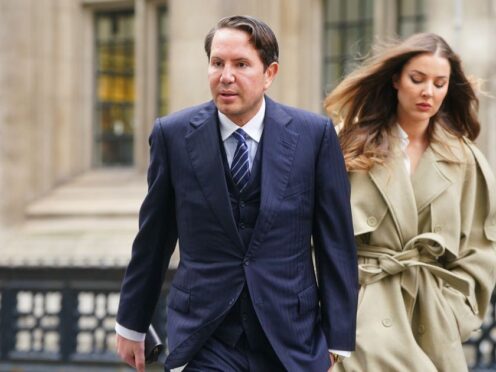
A bankrupt British socialite has said he did not purchase a centuries-old portrait which is at the centre of a High Court legal dispute.
James Stunt and his father, Geoffrey Stunt, are fighting a legal battle with James Stunt’s trustees in bankruptcy over the Sir Anthony Van Dyck painting, The Cheeke Sisters.
The trustees claim that James Stunt owns the portrait, but both James and Geoffrey Stunt claim that Geoffrey bought the artwork in 2013 for £600,000.
James Stunt, who was previously married to the daughter of ex-Formula 1 boss Bernie Ecclestone, was declared bankrupt in June 2019.
At a trial at London’s Rolls Building on Wednesday, he said he was interested in the painting when he saw it in 2012 but later recommended it to his father after deciding against purchasing it.
He said: “I did show an interest in the painting but I made clear it was not for me.”
He continued: “It was negotiated fully by my father and my father paid by cheque.”
Barristers for the trustees have told the court that James Stunt purchased the painting, which is now valued at up to £4 million, but Geoffrey Stunt later claimed ownership of it.
Joseph Curl KC said that this represented a “significant injustice” to the trustees and that the art company that sold the painting believed James Stunt “became and was always intended to be the owner of the painting”.
When Mr Curl suggested that it was James Stunt who negotiated the purchase price for the artwork, the socialite replied: “Absolutely not.”
James Stunt also told the court that the company that sold the piece “thanked me for making the introduction” with his father.
The Cheeke Sisters: Essex, Countess of Manchester and Anne, Lady Rich was painted around 1640 and is one of a small collection of double portraits painted by Van Dyck.
The artist was born in modern-day Belgium and came to work in England in 1632 at the invitation of King Charles I.
James Stunt said he saw the painting on one of several visits to a gallery run by Fergus Hall Limited and later recommended it to his father as he was “rather saturated by Van Dycks at the time”, estimating he had purchased around 40 works by the artist in his life.

He said he suggested it to Geoffrey Stunt as it was a “very spectacular” portrait, but added he now felt “very terrible that my actions are punishing him”.
“I did not purchase this painting. It was my father’s painting,” he said.
Lee Schama, representing Geoffrey Stunt, has previously said that the artwork was bought “by and for” him.
James Stunt married Mr Ecclestone’s daughter, Petra, in 2011. The pair divorced in 2017.
The trial before Insolvency and Companies Court Judge Clive Jones is expected to conclude on Thursday, with a judgment on who owns the artwork expected at a later date.

Enjoy the convenience of having The Sunday Post delivered as a digital ePaper straight to your smartphone, tablet or computer.
Subscribe for only £5.49 a month and enjoy all the benefits of the printed paper as a digital replica.
Subscribe